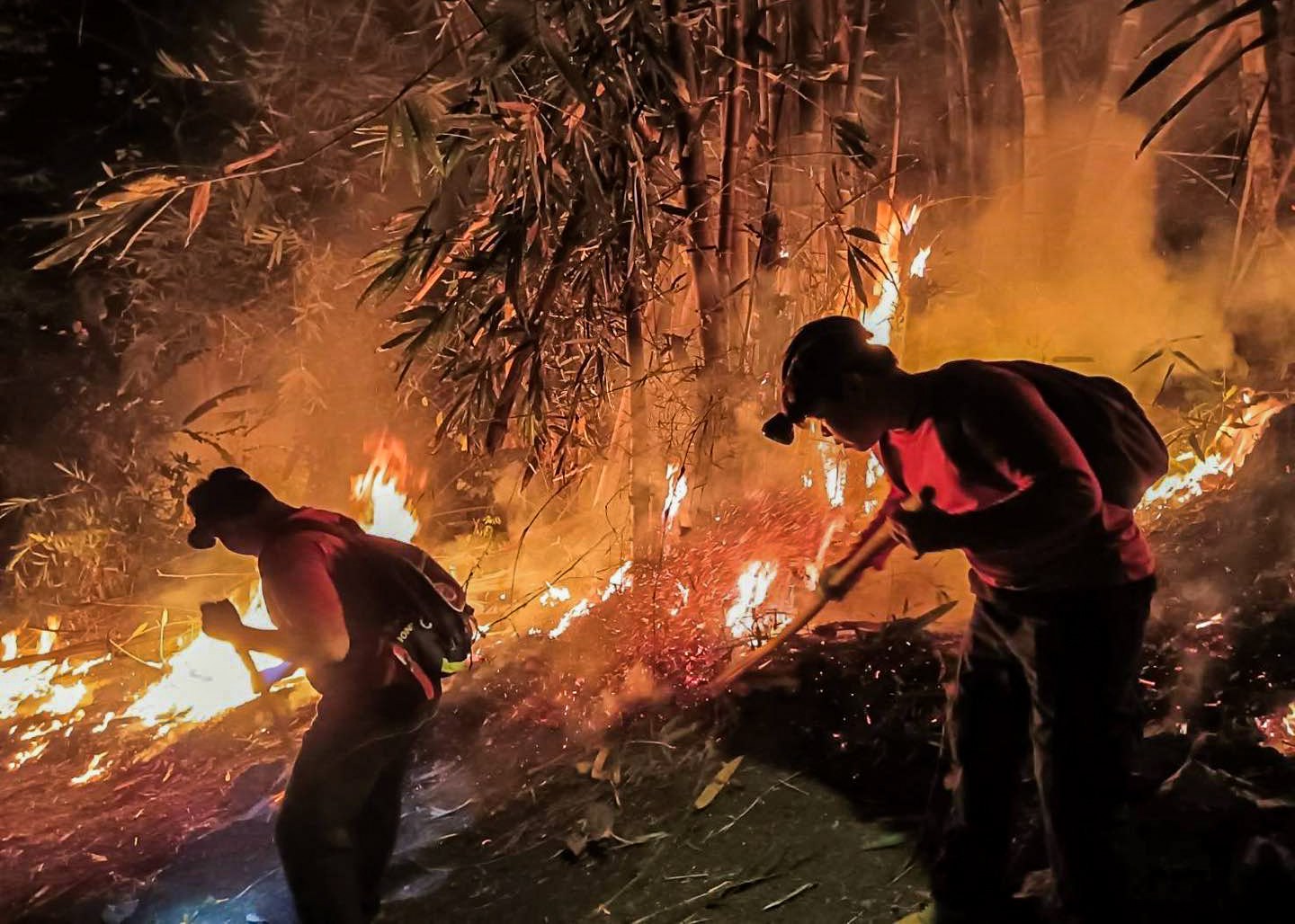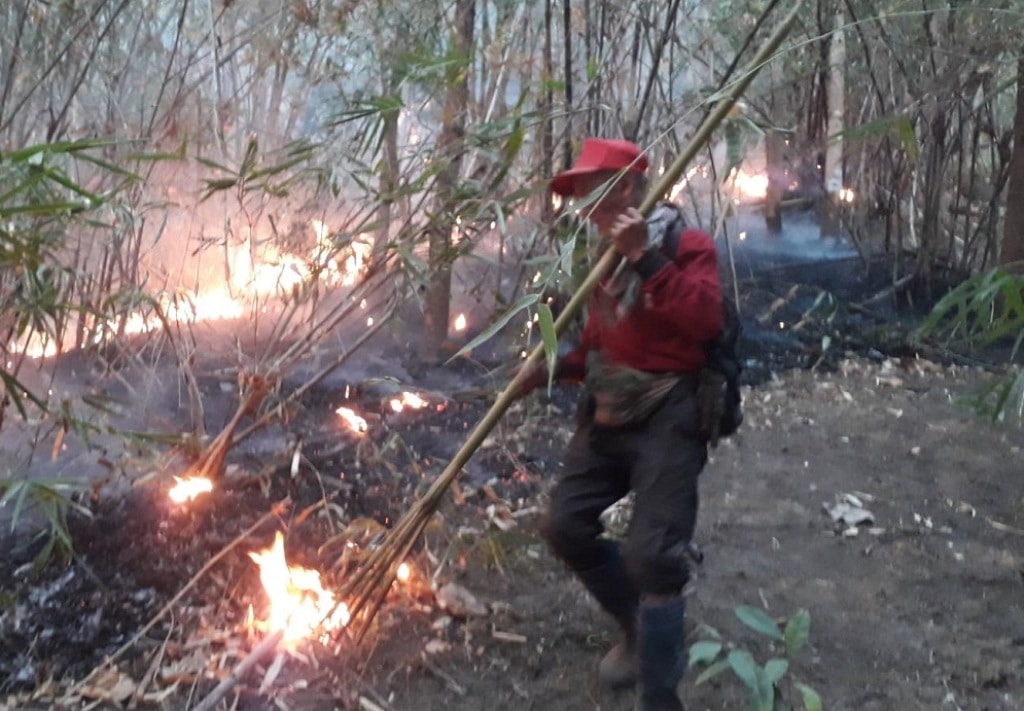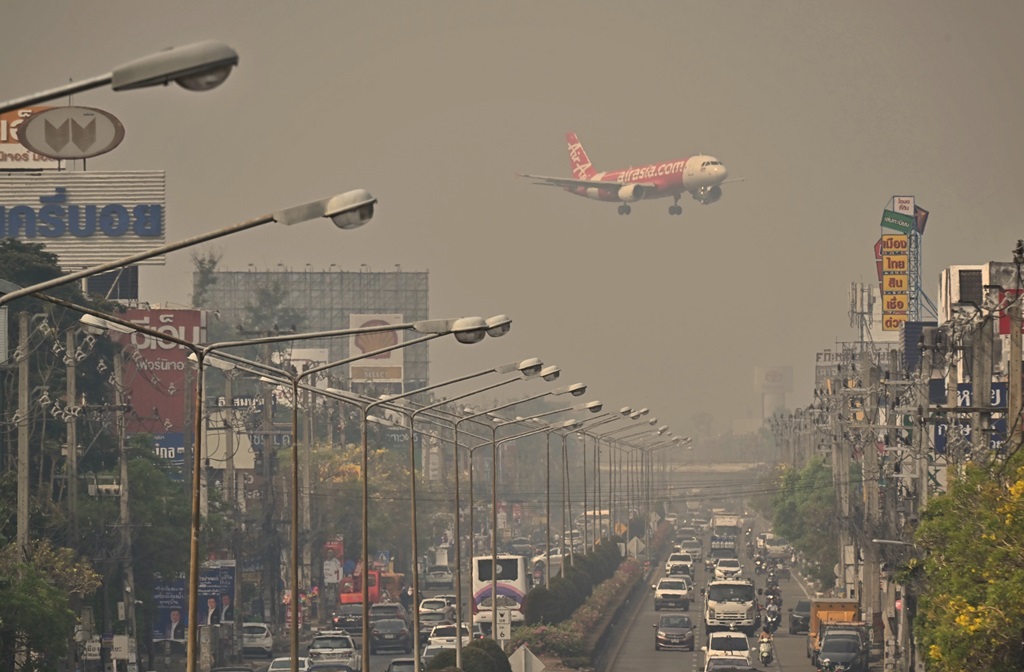Massive wildfires raging throughout northern Thailand have caused a catastrophic pollution problem, with air quality readings in Chiang Mai province above hazardous levels for more than two weeks running, officials said Monday.
Satellite monitoring has discovered around 1,000 hotspots across the region, while uncharacteristically high temperatures and drought conditions fuel the uncontrolled blazes, which were primarily caused by agricultural burning.
“Choking fog clouds from the fires have blanketed various Northern Thailand’s provinces, with Chiang Mai’s haze spreading to Lampang, Lamphun, and others. The wildfires are expected to rage for more than ten days, increasing the region’s hazardous air pollution levels.
The Geo-Informatics and Space Technology Development Agency (GISTDA) reported 3,748 wildfire hotspots on 27,000 acres of forest area between January 1 and March 29. Chiang Mai has lost around 39,500 acres, whereas Mae Hong Son has lost 10,500 acres.
GISTDA said on Monday that Thailand has found 1,864 hotspots across the country, with 952 hotspots identified in the Northern Thailand region alone, based on satellite data from March 28.
“The wildfire in the Mae Sariang district of Mae Hong Son province, which started on March 24, has damaged over 26,600 rai (about 10,644 acres),” stated Likhit Waiprom, chief of the Salawin National Park.
The situation has caused harmful air pollution levels throughout the region. The Pollution Control Department’s Air Pollution Solution Communication Center warned that most of the northern region’s dust levels above the standard 37.5 micrograms/cubic meter, ranging from 42.4 to 161.9.
“The highest PM2.5 dust concentration was recorded in Chiang Dao district, Chiang Mai province, at 161.9 micrograms/cubic meter,” the center stated, warning the people, particularly those in crucial locations, to limit outdoor activities and wear protective masks.
Chatchawan Thongdeelert, a member of the Chiang Mai Breath Council, a local non-governmental organization, stated that all sectors should reduce wildfires in Northern Thailand.
“We attempted to share information about firefighting publicly. Now we must mobilize tools to assist our community in disaster scenarios, such as volunteer drone teams. Drones are being deployed to enable people to use technology for fire prevention and suppression,” Chatchawan said.
Experts have warned that the problem might worsen if temperatures rise to 42 degrees Celsius (107.6 degrees Fahrenheit) in the following weeks. Charnnarong, an environmental specialist, projected that temperatures could rise to 45 degrees Celsius (113 degrees Fahrenheit) in a few years if drought conditions deteriorate.
Meanwhile, the government has taken steps to solve the crisis: the cabinet approved a special budget of 272.65 million baht (U.S. $7.45 million) from the 2023 fiscal year expenditure to combat wildfires and smog in the north.
In January, the House of Representatives also unanimously passed the first reading of seven Clean Air Act proposals. A special panel has been formed to help prepare the law for approval. Prime Minister Srettha Thavisin has declared that combating air pollution is a national emergency.
“Even if the pollution level is lower than it was last year at this time, we are still concerned and will find solutions to improve people’s livelihoods,” the prime minister said during a March visit to Chiang Mai and other Northern Thailand provinces.
High pollution levels in Thailand’s northern city of Chiang Mai and surrounding regions are deterring tourists and worrying locals, prompting the government to urge citizens to avoid outdoor activities on Monday, April 1.
For several weeks last month, the city topped IQAir’s global chart of poor air quality, ahead of Lahore, Pakistan, and New Delhi, India.
Chiang Mai, noted for its picturesque mountain vistas, temples, and stylish cafés, saw 10.8 million visitors prior to the epidemic, but hotel bookings have decreased to 45% occupancy, according to Thai Hotel Association Northern Chapter president Phunut Thanalaopanich, who spoke with CTNNews on Monday.
To address the deteriorating air quality in the northern Thailand’s health ministry encouraged the people to avoid outdoor activities and wear particle-filtering masks.
Chang Mai, Thailand’s third-largest city, scored 289 on IQAir’s air quality index (AQI) in March, which evaluates the amount of inhalable small particles in the air. On Monday, it had dropped to 171, but it was still 19 times higher than the World Health Organization’s recommended threshold.
Northern Thailand’s Chiang Mai Plagued with Toxic Haze








